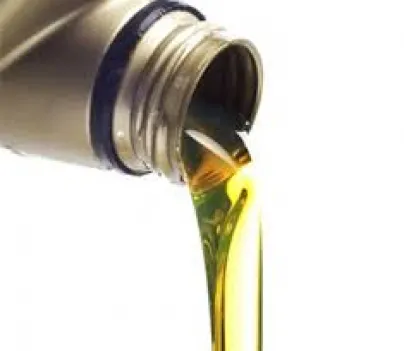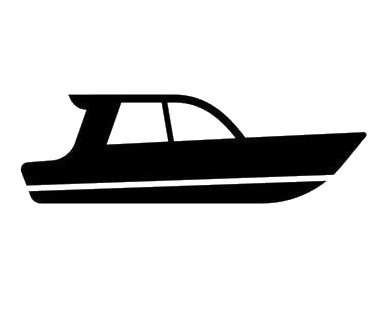
JASO MA and JASO MA2 motorcycle lubricant grades or standards. Meaning.
In 1998, the Japanese Automotive Standards Organisation, or JASO for short, established quality standards or grades for motorcycle lubricants. This was necessary because, as technology developed, different engine designs required lubricants with quite different properties. These included the ability of lubricants to withstand clutch friction and slippage, the ability to resist engine wear, and the ability to protect the surfaces of gearbox gears from chafing. Until 1998, motorcycle engines were mainly equipped with automotive lubricants. As car engines improved, additives were added to car lubricants which were no longer suitable for motorcycle engines. This was due to the fact that automotive engines and gearboxes started to use lubricants with very different properties depending on the design and that the lubricant properties required in 'wet' clutches were not relevant for automotive lubricants because automotive clutches did not work in lubricant. Automotive lubricants were increasingly adding slip-reducing additives which forced motorcycle clutches to slip at higher speeds. There was a need for new lubricants and new standards to guide manufacturers in what they had to achieve. JASO (Japanese Automotive Standards Organisation) delivered. The standards are analogous to those of the API (American Petroleum Institute), but the JASO standards have spread rapidly, partly because the API has not been able to deliver standards for state-of-the-art motorcycle engines.
JASO has provided 2 main classes for four-stroke engines.
JASO MA, MA1, MA2 are the standard for lubricants for "single crankcase" motorcycle engines. These lubricants are used in engines where the clutch is immersed in engine oil. This class of lubricants has high static and dynamic friction and stopping indices which are important for "wet" clutch operation.
JASO-MA-2 standard lubricants are designed for "single crankcase" engines and add the properties required for engines with a catalytic converter in the exhaust system.
JASO MB is a slightly lower standard, these lubricants have lower static and dynamic friction and stopping indices than JASO MA. The lubricants are designed for motorcycles that use different lubricants for the engine, clutch and gearbox. This could be Harley Davison, BMW motorcycles for example.
JASO has also provided lubricant classes or standards for two-stroke engines. These standards were needed because exhaust requirements have risen and two-stroke scooter and motorcycle engines have become very precise.
JASO FA is the lowest standard for two-stroke lubricants, with certain requirements for kinematic viscosity, engine clean-up, ring-stick smokelessness, etc.
JASO FB is a correspondingly slightly higher standard for two-stroke lubricants than FA.
JASO FC is a standard analogous to FB on many parameters but with significantly higher requirements for smoke performance.
JASO FD is a standard analogous to the FC standard but with higher requirements for engine cleaning, sulphate scavenging.
How do I choose lubricants for my motorcycle?
The easiest and least risky way is to look at the grade and viscosity requirements in the motorcycle's instruction manual, or, in the absence of a manual, simply choose the recommended one from the lubricant manufacturer's catalogue.
How do I choose from the many manufacturers on the market?
Lubricants are chemically very complex products. Good base lubricants require a large number of good quality additives to be added to the lubricant, and in particular to be mixed in exact proportions. This can be done by many manufacturers, but the problem is to check that the right result is achieved. A comprehensive check of the quality of lubricants requires not only a detailed chemical analysis, but also testing in laboratories, in running engines, allowing them to run for many hours in various modes, then disassembling them, measuring scale layers and wear at many points. This is extremely expensive and can only be afforded by the major lubricant manufacturers. The smaller ones produce according to a recipe, knowing that only certain characteristics of the lubricants can be checked by the public authorities that actually protect and control consumers. This is a problem in all lubricant markets around the world. It is therefore wise to choose lubricants from well-known manufacturers for the modern engine. Cheap "XXX...lubricants" with a stated JASO-MA-2 class should raise doubts. A saving of €20 - €30 per year on lubricants can translate into €200 for a clutch replacement or, even worse, a major engine overhaul.

 Electric trike mobility scooters, electric four-wheel mobility scooters
Electric trike mobility scooters, electric four-wheel mobility scooters  Electric scooters
Electric scooters  Gas scooters, mopeds, motorcycles
Gas scooters, mopeds, motorcycles  Electric scooters
Electric scooters  Motorcycles
Motorcycles  Cross motorcycles for kids
Cross motorcycles for kids  Cross motorcycles
Cross motorcycles  Street motorcycles
Street motorcycles  Petrol ATV's
Petrol ATV's  Electric ATV's
Electric ATV's  ATV's for kids
ATV's for kids  Fuel and electric kick scooters
Fuel and electric kick scooters  Wheelchairs, trailers
Wheelchairs, trailers  Electric wheelchairs
Electric wheelchairs  Batteries
Batteries  Petrol engines
Petrol engines  Exhaust system
Exhaust system  Electrical parts
Electrical parts  Electric motors
Electric motors  Bicycle parts
Bicycle parts  Electric ATV parts
Electric ATV parts  Fuel system
Fuel system  Light bulbs
Light bulbs  Stickers
Stickers  Motorized bicycle parts
Motorized bicycle parts  Motorized bicycle engines 2T and 4T
Motorized bicycle engines 2T and 4T  Wheelchair trailer parts
Wheelchair trailer parts  Tyres
Tyres  Chargers
Chargers  Kick scooter parts
Kick scooter parts  Plastic covers
Plastic covers  Levers
Levers  Speedometer drive gear
Speedometer drive gear  Brakes
Brakes  Chassis, body
Chassis, body  Tuning
Tuning  Fasteners and screws
Fasteners and screws  Engine parts
Engine parts  Drive gear parts
Drive gear parts  Wind deflectors
Wind deflectors  Lights
Lights  Body repair materials
Body repair materials  Lubricants
Lubricants  Engine performance improvement, recovery additives
Engine performance improvement, recovery additives  Liquids
Liquids  Adhesives, sealants
Adhesives, sealants  Apsaugos priemonės
Apsaugos priemonės  COVID 19 products
COVID 19 products  Sound insulation goods
Sound insulation goods  Maintenance goods
Maintenance goods  Painting supplies
Painting supplies  The smells
The smells  Sandpaper
Sandpaper  Goggles
Goggles  Accessories
Accessories  Boots
Boots  Pants
Pants  Shirts
Shirts  Gloves
Gloves  Moto jackets
Moto jackets  Helmets
Helmets  Helmet accessories
Helmet accessories  Gifts for motorcyclists
Gifts for motorcyclists  Cargo fastening net
Cargo fastening net  Fuel tank trim
Fuel tank trim  Vest
Vest  Reflectors
Reflectors  Motorcycle theft protection
Motorcycle theft protection  Service hour meters
Service hour meters  Moto backpacks
Moto backpacks  Moto storage boxes and bags
Moto storage boxes and bags  Motorcycle communication equipment and accessories
Motorcycle communication equipment and accessories  License plate holders
License plate holders  Backrests for motorcyclists
Backrests for motorcyclists  Moto keychains
Moto keychains  Camping equipment
Camping equipment  Pulling winches
Pulling winches  Bike Covers
Bike Covers  Valve caps
Valve caps  Flashlights
Flashlights  Work gloves
Work gloves  Electric tools
Electric tools  Moto lifts and ramps
Moto lifts and ramps  Knives
Knives  Hand tools
Hand tools  Garden machinery parts
Garden machinery parts  Trimmer parts
Trimmer parts  Chain saw parts
Chain saw parts  Carburetors
Carburetors  Carts
Carts  Car seats for children's
Car seats for children's  Bicycle racks
Bicycle racks  Repair kits
Repair kits  Tire winter accessories
Tire winter accessories  Paint and sticker remover
Paint and sticker remover  Polishing discs
Polishing discs  Polishing paste
Polishing paste  Sandpaper
Sandpaper  Kids car
Kids car  Boat engine parts
Boat engine parts  Spare parts
Spare parts